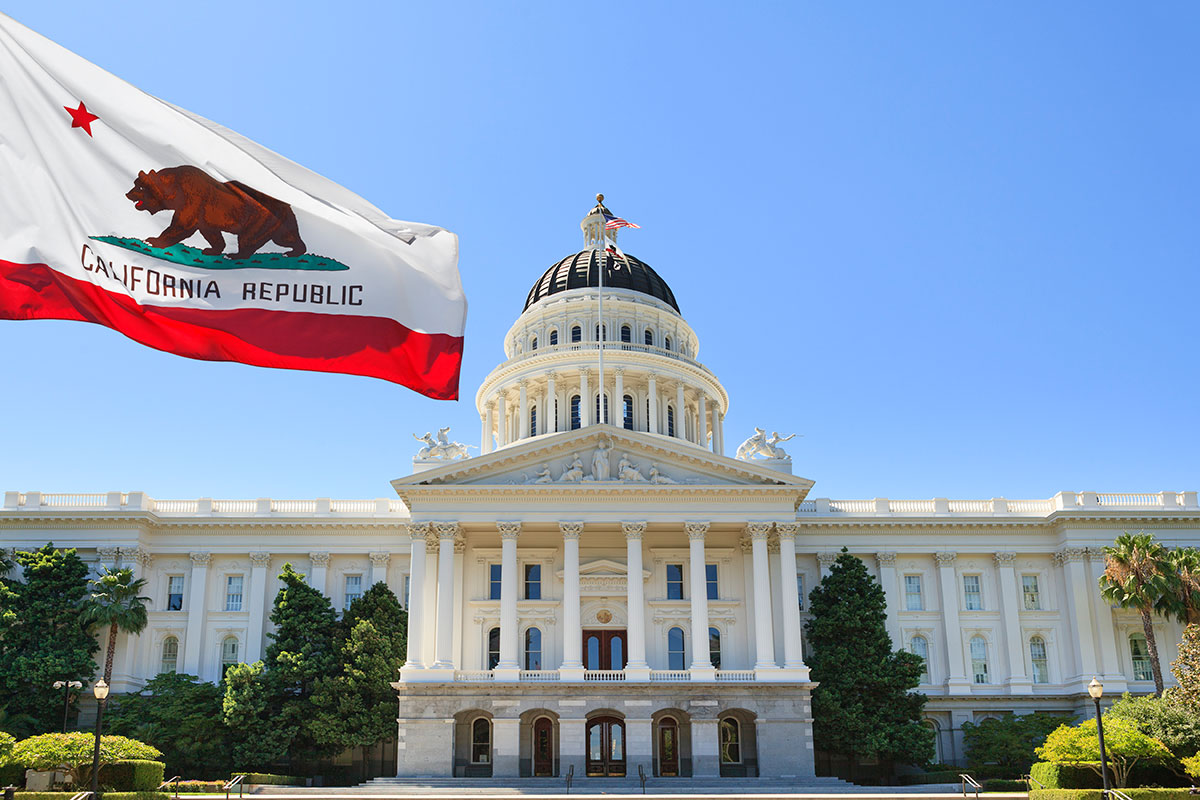Legislative Outcomes
 The Legislature adjourned the second year of the 2021-2022 session just after 1am on September 1st, 2022, in totality, there were 4,476 bills introduced during this biennial Legislative Session. Of those bills 1,500 were Senate Bills and 2,976 were Assembly Bills. 1,166 total bills were sent to the Governor’s desk. Governor Newsom signed 997 bills and vetoed 169 bills for a veto rate of 14.5%.
The Legislature adjourned the second year of the 2021-2022 session just after 1am on September 1st, 2022, in totality, there were 4,476 bills introduced during this biennial Legislative Session. Of those bills 1,500 were Senate Bills and 2,976 were Assembly Bills. 1,166 total bills were sent to the Governor’s desk. Governor Newsom signed 997 bills and vetoed 169 bills for a veto rate of 14.5%.
Below are the results on key pieces of legislation applicable to the agriculture industry and almond growers. Please note this is not an exhaustive list or legal advice.
Signed by the Governor
AB 2183 (Stone) Ag labor relations
Signed into law by the Governor
Among the provisions in AB 2183, would limit a farmworker’s option for a secret ballot in a vote regarding whether to unionize. The bill allows farmworkers to unionize through a vote-by-mail process or through a process where ballot cards are dropped off at the state’s agricultural labor relations board, known as card check. As part of his signing message, the Governor did request additional clarifying language to be completed next year in the form of additional legislation to ease implementation.
AB 2101 – Whole Orchard Recycling Project: Carbon Offsets
Signed into law by the Governor
This bill would expand the list of projects that may be included on the California Carbon Sequestration and Climate Resiliency Project Registry to include whole orchard recycling projects. This comes after the Agricultural Burning Ban that was enacted by the San Juaquin Pollution Control District. This bill would define “whole orchard recycling” to mean the onsite grinding or chipping of whole trees during orchard removal, and incorporation of the ground or chipped biomass into the topsoil prior to replanting. The listed projects are noted to drive climate action on the state’s natural and working lands and are eligible for funding from state agencies.
SB 54 (Allen) Plastic Pollution Producer Responsibility Act
Signed into law by the Governor
After four years of negotiations the Legislature overwhelmingly passed a comprehensive bill, SB 54 (Allen), to reduce single use packaging from ending up in landfills. The passage of SB 54 and compromises included in the bill ensured environmental groups would not move forward with a much more penalizing ballot proposal increasing requirements on businesses and taxes on both consumers and industry. The since removed ballot measure, would have included a 1-cent tax on all packaging, included stricter mandates, and more ambiguity. The agriculture industry worked to include several key exemptions in the bill for food and agriculture packaging protections.
Vetoed by the Governor
AB 2146 (Bauer-Kahan) Neonicotinoid pesticides, prohibited nonagricultural use
Vetoed by the Governor
After previous attempts to outright ban neonic pesticides in previous legislative sessions failed, Assemblymember Bauer-Kahan introduced a scaled back ban this year in AB 2146. AB 2146 would have required the director of Department of Pesticide Regulation (DPR) to prohibit the sale, possession, or use of neonicotinoid pesticides, except for use on an agricultural plant, as defined. The bill would have allowed DPR to authorize the use of these pesticides if the director finds that it would address a valid environmental emergency and there are no other, less harmful alternatives.
AB 2550 (Arambula) San Joaquin Valley Air Pollution Control District (SJVAPCD)
Vetoed by the Governor
AB 2550 would have required CARB to hold at least one public hearing regarding SJVAPCD’s attainment plan, data, and enforcement practices. It also would have required CARB to create a report and intervene to develop regulations the SJVAPCD must follow to meet federal air standards, adding more regulatory layers without actual air quality benefits.
Find outcomes on other key pieces of legislation by reading the Agricultural Council of California’s report.
Mid-Term Election Update

The mid-term election is less than two weeks away and if TV ads are any indication, campaign rhetoric is in full-swing. From national to local races, this year’s elections will have implications for the trajectory of policy and advocacy efforts especially as we enter a down economy and looming recession. Patience will be paramount as margins between candidates have become tight and mail-in ballots take time to count. It is likely we won’t know the final winners of close races for weeks or even a month out.
Many things will be top of mind for voters this year including climate change, crime, reproductive rights, homelessness, and the economy. In California, the soaring prices at the pump are what analysts are predicting could be a defining factor for voters.
From a national perspective, many in the beginning of the election cycle projected a Republican sweep for both houses of Congress. However, with the recent overturn of Roe V. Wade, Democratic voters are more energized. As we creep closer to election day, analysts are now projecting the most likely scenario could be a split congress with the Republicans taking over the House and the Senate remaining Democrat led.
In California, there will be numerous new names on the ballot this year. At least 22 members of the Assembly and 9 members of the Senate will not return in January either because they have reached the end of their term or decided to move on. While the Republican party is hopeful it will be able to keep and potentially gain a seat or two, many of these races will be a moderate Democrat versus a more liberal Democrat. Understanding the political dynamics of our state, the agriculture industry has leaned heavily on the moderate Democrats in their advocacy efforts. These moderate Democrats have often aligned with Republicans on many ag issues.
As with any election, much can change in the matter of days and week. As the fight for votes continue, here are a few key races and propositions to watch as we head to November 8.
California Key Races
These California central valley races are some of the most contested races within the state.
Senate District 4 – Tim Robertson (D); Marie Alvarado-Gil (D)
Region: Amador County, Calaveras County, Lake Tahoe, parts of Stanislaus County
This race is a toss-up and has two Democrat challengers. Tim Robertson is the executive director of the North Valley Labor Federation. He is the labor favorite candidate in this race. Marie Alvarado Gil is a self-proclaimed moderate Democrat and a charter school administrator. She has received support of business and agriculture.
Senate District 16 – Senator Melissa Hurtado (D); David Shepard (R)
Region: East Bakersfield, Tulare Basin, Kettelman City, Hanford
This race is trending toward David Shepard. Melissa Hurtado is a moderate Democrat and the incumbent. David Shepard is a Republican and Tulare County farmer. Both candidates would be helpful to business and agriculture.
Assembly District 22 – Juan Alanis (R); Jessica Self (D)
Region: Stanislaus County including Modesto, Turlock, Patterson
This race will be a toss-up. This is a brand-new assembly district for California. Juan Alanis is a Republican and a deputy sheriff. Jessica Self is a Democrat and a public defender.
Assembly District 27 – Esmerelda Soria (D); Mark Pazin (R)
Region: Merced, Madera, northwest Fresno
This race is projected to be close, though the district leans Democrat. Esmerelda Soria is a Fresno City Council member and a Democrat supported by the Mod Dem caucus. Mark Pazin is a former Merced County sheriff and is a Republican.
Assembly District 35 – Leticia Perez (D); Jasmeet Bains (D)
Region: Kern County
This race is a toss-up and has two Democrat challengers. Leticia Perez is a Kern County Supervisor and a lawyer. She is supported by the labor unions and Democrat Party. Jasmeet Bains is a medical director for substance abuse treatment centers and is the more moderate candidate supported by law enforcement and healthcare.
Congressional Key Races
The entire nation will be watching these central valley races as they will help decide the fate of a Republican or Democratic held House of Representatives.
Congressional District 9 – Josh Harder (D); Tom Patti (R)
Region: San Joaquin County
Josh Harder is favored to win this race, though it will be close. Harder is the incumbent and a Democrat. Tom Patti is a Republican and currently a San Joaquin County Supervisor.
Congressional District 13 – Adam Gray (D); John Duarte (R)
Region: Merced, Madera, Modesto
This race is a toss-up. Both candidates will be new to Congress. John Duarte is a Republican who is a businessowner and farmer. Adam Gray is a moderate Democrat who was previously in the California legislature where he was one of the more business and agriculture friendly assemblymembers.
Congressional District 22 – David Valadao (R); Rudy Salas (D)
Region: Bakersfield, Tulare, Hanford, Kettleman City
This race is a toss-up. David Valadao is a Republican and the incumbent for this seat. He is a farmer and was first elected in 2012. Rudy Salas is a moderate Democrat who was previously in the California legislature where he was one of the more business and agriculture friendly assemblymembers.
Propositions
Proposition 30 – Income Tax and Electric Vehicles
Proposition 30 would impose a 1.75 % increase on the top-earning Californians– for the share of their income above $2 million – per year to fund a suite of climate programs. It is estimated the tax increase will raise between $3.5 billion to $5 billion annually with most of the money (about 80%) going towards rebates for people buying zero-emission cars and to building more charging stations.
The criticisms of the bill surround the main proponent and funder, the Rideshare business Lyft. Lyft’s goal with the bill is to use the dollars generated to fund its transition to electric vehicles. Rideshare companies are mandated by the California Air Resources Board to use electric vehicles for at least 90 percent of the miles driven by 2030. Proponents say that this will help the state address its ambitious climate goals and reduce air pollution.

